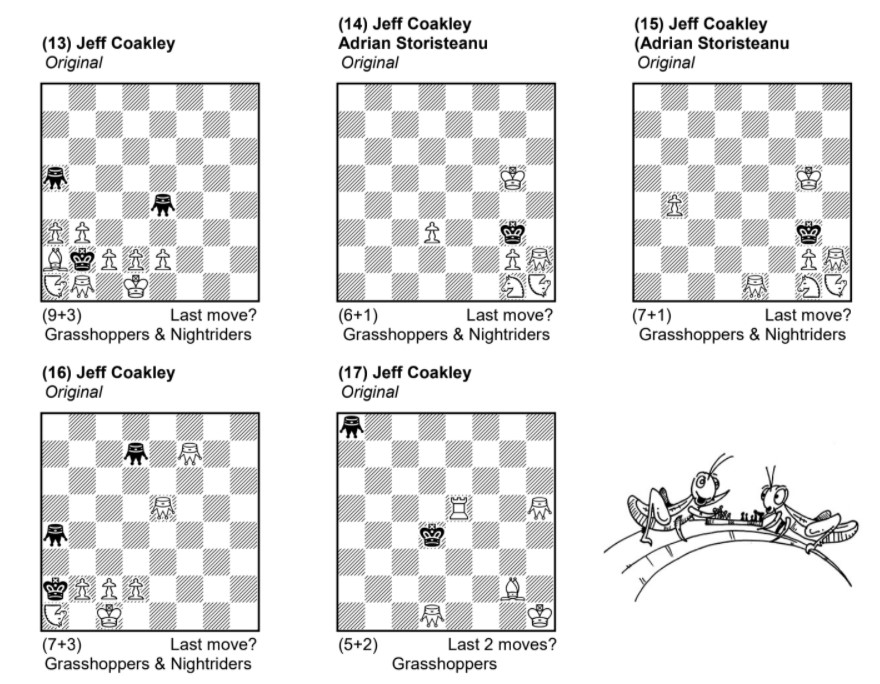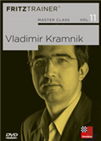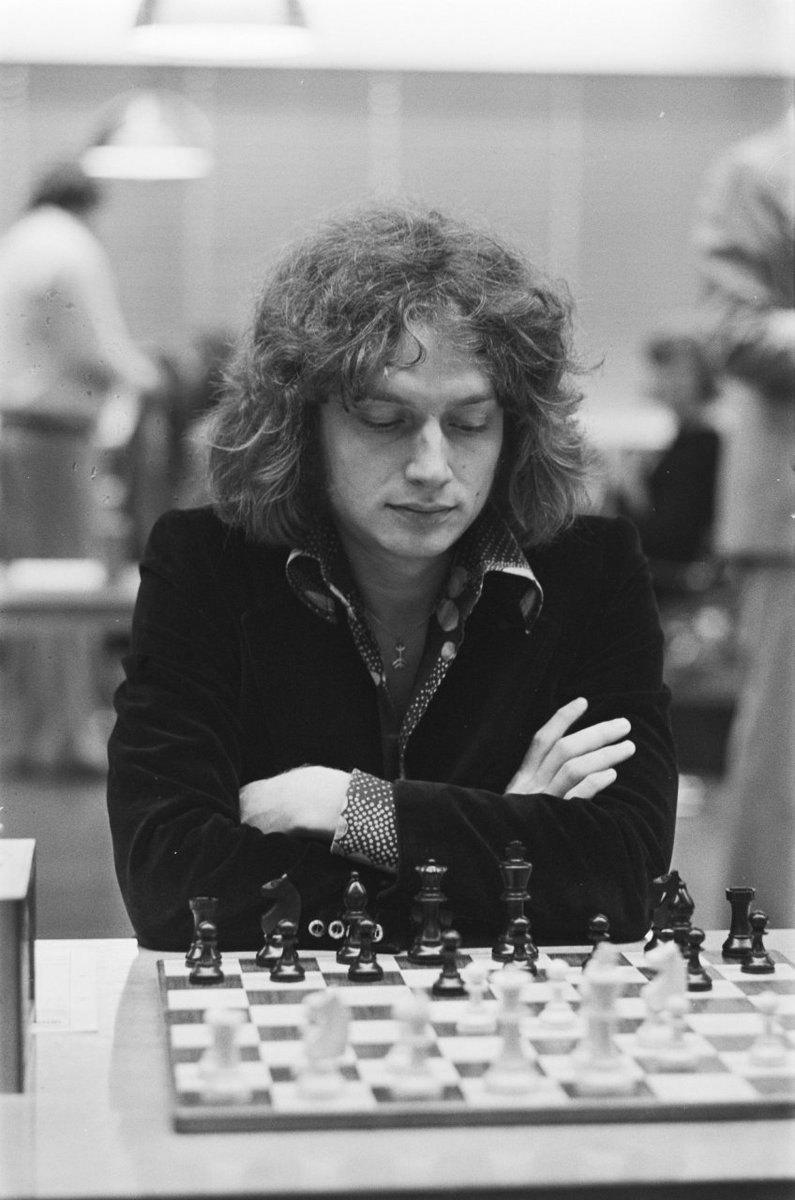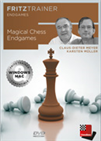Study of the Month: January 2021
As we begin a new year, I would like to do something different this time. I want to tell a few interesting but real stories. In Germany — possibly also in other countries — children a few decades ago enjoyed looking at a special arrangement of a scope, mirrors and colorful objects, creating chaotic colorful visuals for the user. It is described by Wikimedia as a cylinder with mirrors containing loose, colored objects such as beads or pebbles and bits of glass. As a metaphor, this kaleidoscope stands for a colourful hodgepodge.

Rudenko revisited
Readers will remember that in April 2020, I wrote about Valentin Rudenko and the Soviet Space Program, having been allowed to add my planned article after accidentally submitting a wrong draft first. While I can be afforded a mistake here and there, in crucial situations not everyone has that much leeway. As a case in point, Valentin Rudenko’s problem from 1957 now becomes 64 years old, as does the launch of the first female into space. Being found strolling the streets of Moscow as a child, the Russian scientists tested her and gave her a home, making sure she would be able to go into space. A tale like that is excellently told by some people — I heard it on a podcast first, although I knew the main elements before but not how she was found, trained and selected.
 After the death of Alex Trebek, who was once named the G.H.O.S.T. (Greatest Host Of Syndicated Television), Ken Jennings became the interim host of the game show “Jeopardy!” (Thank you, Alex!). In an episode likely recorded in November 2020 and aired on 12 January 2021, the following final answer was given to which contestants had to find the correct question (i.e. answer phrased as a question, as per the game rules). The category “Famous Animals” had this clue:
After the death of Alex Trebek, who was once named the G.H.O.S.T. (Greatest Host Of Syndicated Television), Ken Jennings became the interim host of the game show “Jeopardy!” (Thank you, Alex!). In an episode likely recorded in November 2020 and aired on 12 January 2021, the following final answer was given to which contestants had to find the correct question (i.e. answer phrased as a question, as per the game rules). The category “Famous Animals” had this clue:
When she came first to the World‘s attention in 1957, she was dubbed “Muttnik” by U.S. journalists.
Although technically correct, the question Who is that Russian dog? didn’t count, Who is Checkers? was obviously wrong, and only a veterinary expert got Who is Laika?, which was the correct question. Reading my earlier article would have provided them with the knowledge, but they can’t be blamed as I myself was also provided with some extra knowledge that I had accidentally omitted. When presenting this story in a Zoom meeting of chess composers on 16 January 2021, I selected this anecdote to talk about. After showing Rudenko’s problem, it was pointed out by Juraj Lörinc...
...that the solution’s variations (1.Bf4! Nc1/Nd4/Nxf4/Ng1 2.Nxc1/Nxd4/Nxf4/Nxg1) are “mutates” of the set variations. In the diagram, if Black was to play, there would be set mates in three: 1.-Nc1/Nd4/Nf4/Ng1 2.Nf4/Ng1/Nc1/Nd4. Those form two mutual pairs of going to d4/g1 and f4/c1 each, whereas in the solution the captures occur obviously on the same square as the knight entered.
A “mutate” occurs, to my understanding, if the same variations are seen in a specific cycle (with each letter representing a move, “a A” and “b B” becomes “a B” and “b A” — for example the set play 1.-Nc1 2.Nf4 and 1.-Nf4 2.Nc1 becomes 1.Bf4 Nc1 2.Nxc1, 1.-Nf4 2.Nxf4 in the solution).
To commemorate the 64th anniversary of Laika’s mission and the Rudenko problem, an unrelated endgame study from 1957 is replayable below.
Fairy-chess terminology
 In the same online meeting, it became clear that some compositions I find enjoyable would simply be unsuitable for a general audience. The following quote appeared in a January 2021 article in a specialized free magazine, Problemas (by the Spanish chess problem organization SEPA, unrelated to the payment area of the same abbreviation):
In the same online meeting, it became clear that some compositions I find enjoyable would simply be unsuitable for a general audience. The following quote appeared in a January 2021 article in a specialized free magazine, Problemas (by the Spanish chess problem organization SEPA, unrelated to the payment area of the same abbreviation):
But köko okök grasshoppers triangulate even better than antignuköko gnus!
The accompanying problem showed a triangulation on a straight line, i.e. a piece (grasshopper) using three moves to return where it started while the other party used four moves, thus allowing the other side to move in the starting position (this would be impossible with standard pieces, as knights alone can’t lose a tempo). A famous study by David Joseph has nearly the same kind of triangulation — it is replayable below in its most commonly reproduced form.
Should you come up with the pun “fake gnus” now after reading about the fairy chess piece of that name, be assured that it is already used by fairy chess composers for a theme where two gnus trade places during a game in which they replace knights (gnus can jump in an either 1:3 or 1:2 L form, whereas knights only jump in the 1:2 L-form).
Close, but no Zinar
The Russian Team Championship in Sochi 2020 saw a game that of course had me check for similar positions in endgame studies.
 This DVD allows you to learn from the example of one of the best players in the history of chess and from the explanations of the authors (Pelletier, Marin, Müller and Reeh) how to successfully organise your games strategically, consequently how to keep y
This DVD allows you to learn from the example of one of the best players in the history of chess and from the explanations of the authors (Pelletier, Marin, Müller and Reeh) how to successfully organise your games strategically, consequently how to keep y
Dubov is lost as was demonstrated four years ago in a double setting by Zinar. Let us follow the game first (both the game and the study are replayble below). Black was not at his best, as at first he had planned 58.-b4? but now saw that 59.axb4+ Kxb4 60.Ke3 Kb3 61.Kd2 draws. This was already demonstrated many decades ago by Grigoriev, and Artemiev correctly continued 58.-Kc4! 59.Ke3 but then misinterpreted a future variation and drew after 59.-Kb3? 60.h4, etc. (Draw, 68th move).
White could have been defeated with 59.-a4!! — Artemiev correctly noticed that White will promote and Black won’t, but he didn’t notice that promotion is not necessary: 60.Kd2 Kb3 61.Kc1 K:a3 62.Kb1. The black pawns seem stopped, White has an unstoppable passed pawn, yet 62.-b4 63.h4 b3 64.h5 b2 65.h6 Kb3 66.h7 a3 67.h8Q a2 mate leaves Black a queen down and a king up.
I noticed that the pawn could be on the g-file and if Black couldn’t reach it, an echo would be the only way to win.
Black can win by entering the pawn's “extended square”, but if he couldn't, 1.-Kb3 2.g4 a3 3.g5 a2+ 4.Ka1 Ka3 5.g6 b4 6.g7 b3 7.g8Q b2 mate would be the only way to win.
Mikhail Zinar arrived at the same conclusion a few years earlier.
Readers should not have any issue finding both main variations.
Flashed?
While Arne Kaehler is the ChessBase expert for chess variants in video games, I was a great fan of games that ran on the now deprecated Adobe Flash architecture. Back in the days when I found websites with many such games, they often were rather simple yet nicely playable, similar to many early DOS games. Others offered adventures or RPGs that took a lot of time to complete, and many such games spawned commercial games by the same developers.
The flood of games by everyday indie developers on other platforms led to ideas that can’t be replicated only with a chessboard and pieces and possibly a clock, as they require either artificial intelligence or even mathematical randomness. There are also some chess adventure games where, for example, a piece fights against other pieces on a big chessboard that it has to traverse — usually a knight is used in such settings. I am not fond when this is done in real time, but if the pieces move in turns like usually in chess, this can be an interesting small game. Similar non-standardized boards are seen in fairy chess sometimes.
 The quality of such titles depends on the knowledge of a developer as a chess player himself and as a video game tester, unless he has other people who test for him. As such, I played a few of those variations, helped at least two developers (one by playing his game when it was freshly out, the other by providing feedback to an incorrect puzzle for standard chess), but didn't find any inspiration for composing by that. Rather the opposite applies: when I started getting “hooked” on Flash and other video games (although I was a lifetime gamer, the intensity was not as high before) around 2009, I already was at a point where I didn’t compose much, and that got even worse. But then, I likely just was — and still am — out of real inspiration.
The quality of such titles depends on the knowledge of a developer as a chess player himself and as a video game tester, unless he has other people who test for him. As such, I played a few of those variations, helped at least two developers (one by playing his game when it was freshly out, the other by providing feedback to an incorrect puzzle for standard chess), but didn't find any inspiration for composing by that. Rather the opposite applies: when I started getting “hooked” on Flash and other video games (although I was a lifetime gamer, the intensity was not as high before) around 2009, I already was at a point where I didn’t compose much, and that got even worse. But then, I likely just was — and still am — out of real inspiration.
The past decade (2011 to 2020) however brought much inspiration for other composers who are either new or didn’t compose endgame studies before. Jan Timman seems to have on-and-off phases of composing also, so I selected one of his endgame studies to present below.
Not the President
 In over 4 hours in front of the camera, Karsten Müller presents to you sensations from the world of endgames - partly reaching far beyond standard techniques and rules of thumb - and rounds off with some cases of with own examples.
In over 4 hours in front of the camera, Karsten Müller presents to you sensations from the world of endgames - partly reaching far beyond standard techniques and rules of thumb - and rounds off with some cases of with own examples.Azerbaijan has a chess composer named Ilham Aliev (Azeri: İlham Əliyev) who is very prolific. As he admitted in an e-mail many years ago, he is unrelated to the President of the same name. As a chess writer, I won’t write about the politician, but will rather inform readers that the output of the composer includes over 400 endgame studies (corrections and versions included). One of them is — in my opinion — among the easiest endgame studies ever composed.
You should not need any help solving this, so the solution is replayable below without comments.
His chess-autobiographical book Şahmat Yaradıcılığım, which he signed for me in Belgrade 2016, is easy to understand without knowledge of the Azeri language, but likely sold out everywhere.
Not the Escherian stairwell
When finishing the article, I received the new issue of eg, including the Moscow Tourney 2020 award. The seconnd Prize is something that some readers will be able to solve, but likely most should just enjoy it in the replayable board below. It depicts a staircase, but with an unusual setting. For me, the Russian composer has created a quotable idea.
Escher's ideas such as his impossible stairwell of course inspired many people. The Ames Window (yes, the same Ames who made the illusion with the anamorphic room), a trapezoid that is perceived as a rectangle, is among the more interesting optical illusions. With a perfect shape to fool the human brain, it seems as if windows swing back and forth, and even matter can be traversed. Obviously, that is all part of the optical illusion of the window frame that actually rotates but by clever painting does not look like it does. The “de Heer circle” works similarly. I have no information about its inventor, so I don’t know if he is related to the chess composer Joost de Heer.
Kiryakov’s study might not have an optical illusion, but it has the illusion of a starting position that “must be a draw”.
Click or tap an entry in the list to switch positions
You probably know that you can move pieces on our replay boards to analyse and even start an engine to help you. You can maximize the replayer, auto-play, flip the board and even change the piece style in the bar below the board.
At the bottom of the notation window on the right there are buttons for editing (delete, promote, cut lines, unannotate, undo, redo) save, play out the position against Fritz and even embed the ChessBase game viewer on your website or blog. Hovering the mouse over any button will show you its function.
Perfect endgame analysis and a huge increase in engine performance: Get it with the new Endgame Turbo 5! This brings the full 6-piece Syzygy endgame tablebases on a pendrive. Just plug it in a USB socket and you are set!

World Federation for Chess Composition (www.wfcc.ch)
Links
.jpeg)


















 After the death of Alex Trebek, who was once named the G.H.O.S.T. (Greatest Host Of Syndicated Television), Ken Jennings became the interim host of the game show “Jeopardy!” (Thank you, Alex!). In an episode likely recorded in November 2020 and aired on 12 January 2021, the following final answer was given to which contestants had to find the correct question (i.e. answer phrased as a question, as per the game rules). The category “Famous Animals” had this clue:
After the death of Alex Trebek, who was once named the G.H.O.S.T. (Greatest Host Of Syndicated Television), Ken Jennings became the interim host of the game show “Jeopardy!” (Thank you, Alex!). In an episode likely recorded in November 2020 and aired on 12 January 2021, the following final answer was given to which contestants had to find the correct question (i.e. answer phrased as a question, as per the game rules). The category “Famous Animals” had this clue: In the same online meeting, it became clear that some compositions I find enjoyable would simply be unsuitable for a general audience. The following quote appeared in a January 2021 article in a specialized free magazine,
In the same online meeting, it became clear that some compositions I find enjoyable would simply be unsuitable for a general audience. The following quote appeared in a January 2021 article in a specialized free magazine,  The quality of such titles depends on the knowledge of a developer as a chess player himself and as a video game tester, unless he has other people who test for him. As such, I played a few of those variations, helped at least two developers (one by playing his game when it was freshly out, the other by providing feedback to an incorrect puzzle for standard chess), but didn't find any inspiration for composing by that. Rather the opposite applies: when I started getting “hooked” on Flash and other video games (although I was a lifetime gamer, the intensity was not as high before) around 2009, I already was at a point where I didn’t compose much, and that got even worse. But then, I likely just was — and still am — out of real inspiration.
The quality of such titles depends on the knowledge of a developer as a chess player himself and as a video game tester, unless he has other people who test for him. As such, I played a few of those variations, helped at least two developers (one by playing his game when it was freshly out, the other by providing feedback to an incorrect puzzle for standard chess), but didn't find any inspiration for composing by that. Rather the opposite applies: when I started getting “hooked” on Flash and other video games (although I was a lifetime gamer, the intensity was not as high before) around 2009, I already was at a point where I didn’t compose much, and that got even worse. But then, I likely just was — and still am — out of real inspiration.





